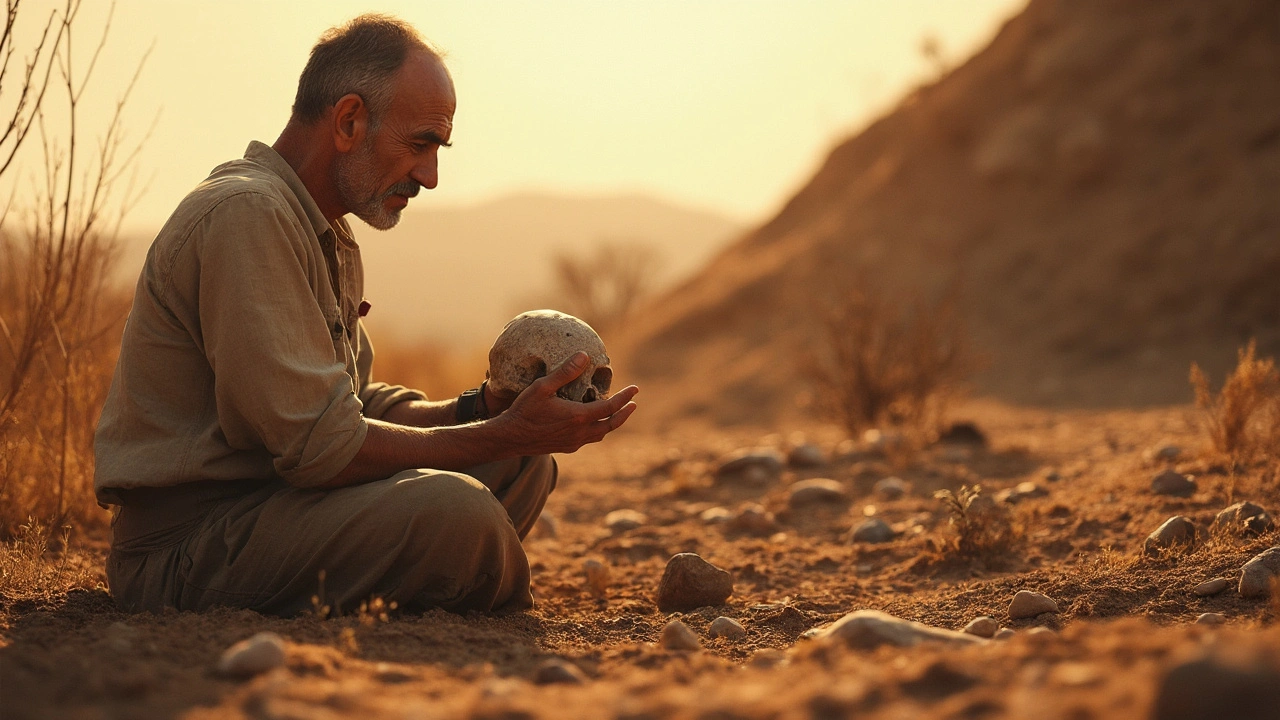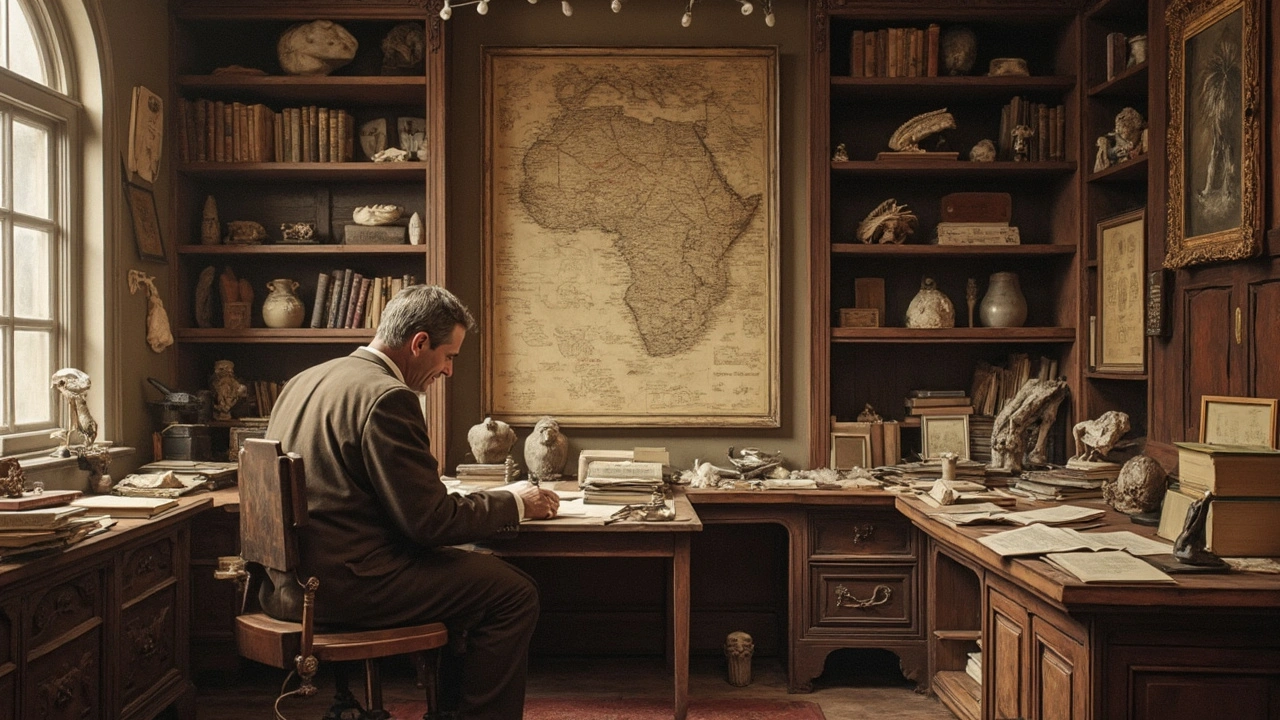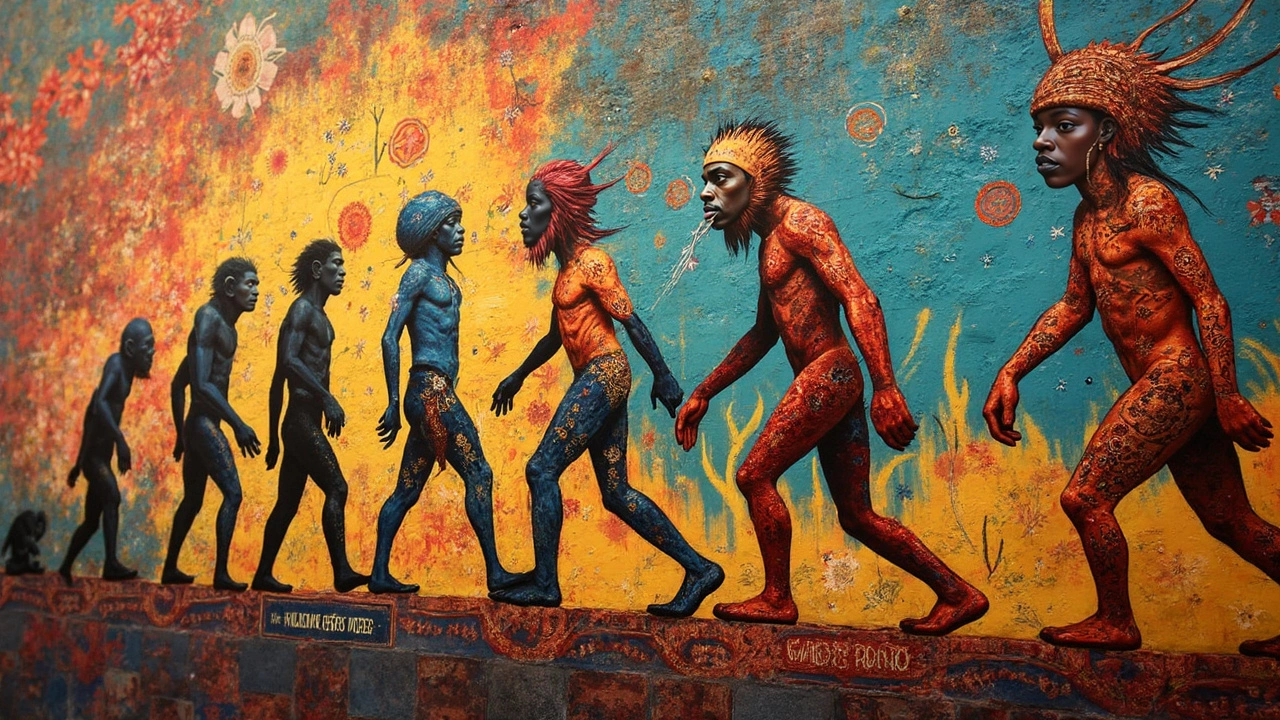- Home
- //
- Discover Robert Broom: Pioneer of Human Evolution in Africa
Discover Robert Broom: Pioneer of Human Evolution in Africa

Robert Broom isn't just a name in the history books; he sparked a major shift in how we understand where humans come from. Imagine the excitement of the first days when scientists were just starting to piece together the story of human evolution. Robert Broom was right there, making groundbreaking finds in South Africa.
Born in Scotland and later moving to Australia and South Africa, Broom wasn't your typical scientist. He started as a medical doctor before diving headfirst into the world of fossils. He faced a lot of skepticism, especially when he began promoting evolutionary theories at a time when such ideas were still considered outlandish by many. But Broom wasn't someone to give up easily.
In a world where the accepted belief was that human origins lay in Europe, Broom's discoveries in South Africa were nothing short of revolutionary. By finding and studying important hominin fossils like Australopithecus africanus, also known as 'Mrs. Ples', he provided solid evidence that supported earlier claims by Raymond Dart about Africa being the cradle of humankind. This was huge because it challenged so many long-held ideas and opened the door to a better understanding of our ancient roots.
- Early Life and Education
- Career Beginnings and Challenges
- Significant Discoveries
- Impact on Human Evolution Studies
- Controversies and Legacy
Early Life and Education
Picture this: Robert Broom was born on November 30, 1866, in a Scottish town called Paisley. It's here that young Robert probably developed his fascination with nature and science. Scotland, with its rich history and natural beauty, was a great backdrop for a curious mind.
But Broom didn't stick around in Scotland for long. He headed off to Glasgow to pursue his studies, which wasn't too far from home but was a big deal back then. At the University of Glasgow, he first became a medical doctor, graduating in 1895. Not just content with a single degree and eager to learn more, Broom later earned a Doctor of Science degree in 1905. His academic journey was pretty unconventional but it set the stage for his future adventures.
Marriage and Journey Abroad
While all this studying was going on, Broom also found time for love. He married Mary Baird Baillie in 1893. The couple later packed up and moved first to Australia and then to South Africa in 1897. This move would prove to be a turning point in his life and career. The vast landscapes and hidden history in South Africa captivated him, giving him a playground for his scientific curiosity.
His early days were tough. He faced financial struggles and career challenges, especially when he started promoting evolutionary ideas. Back then, not everyone was on board with Darwin's theories, and Broom’s ideas weren't exactly welcomed with open arms. He even lost his job at Victoria College in Stellenbosch for backing evolution.
All these twists and turns in his early life not only shaped his career path but also made him one of the pioneering figures in the study of human evolution. So, in a way, Paisley’s very own son became an unlikely hero in revealing the story of our ancestors from Africa.
Career Beginnings and Challenges
Diving into the world of paleontology wasn't what Robert Broom initially set out to do. After all, he started his career as a medical doctor, armed with a degree from the University of Glasgow. But the world of fossils and evolution soon called out to him, leading him on a path few ventured down at the time.
Broom's migration to South Africa in 1897 marked a turning point. There, he found himself drawn to the unique fossil-rich landscapes of the Karoo region. However, before making a full switch to the fossil scene, Broom had an intriguing stint teaching zoology and geology at Victoria College in Stellenbosch. His time there might have ended abruptly when he got sacked for being vocal about evolutionary theory—a risky stance at a time when such ideas weren't exactly popular.
Facing Financial Hurdles
Without a steady job, Broom faced financial struggles—something many passionate researchers know all too well. But rather than deter him, it seemed to fuel his fire. He made ends meet by taking on various gigs, including serving as a medical doctor during World War I, all while diving deeper into the study of therapsids, the ancient mammal-like reptiles, which became a key part of his career.
Persistence Pays Off
It wasn’t until 1920 that Broom's persistence began to pay off when he was elected as a Fellow of the Royal Society, a big nod of approval from the scientific community. Yet, it was his brave move in the face of adversity—ostensibly turning lemons into lemonade—that paved the way for his later success. He joined the Transvaal Museum in 1934, and that's where his career took an exhilarating new direction, collaborating on uncovering some of the most significant hominin fossils like Australopithecus africanus and Paranthropus robustus.
While Broom might have faced his share of challenges right from his career's onset—a career that was anything but straightforward—his relentless pursuit of understanding human origins kept him going. It really goes to show that sometimes, it's the bumps along the road that lead us to discover some truly incredible things.

Significant Discoveries
Robert Broom's discoveries were like gold mines for the world of paleontology. One of the most talked-about finds was the skull known fondly as "Mrs. Ples." This specimen was initially classified as Plesianthropus transvaalensis but is now recognized as Australopithecus africanus. It's hard to overstate how important this discovery was in showing that human-like beings existed in Africa.
The Australopithecus Saga
After Raymond Dart's earlier work on the Taung Child, Broom added substantial weight to the argument that Africa was the birthplace of humanity. His finds at Sterkfontein in the 1930s and 40s further solidified this theory. Each fossil discovery painted a clearer picture of early hominins, with physical features suggesting that walking upright was more common than previously thought.
More Than Just a Skull
Apart from the famous skulls, Broom also uncovered fossilized remains of more robust hominins, famously known as Paranthropus robustus. These discoveries at Kromdraai and Swartkrans showed the wide range of human ancestors that once roamed Africa. He wasn't just about collecting bones, though; he helped piece together how these creatures might have lived and interacted with their environment.
"The real significance of Robert Broom's discoveries was not just in the individual fossils but how they connected vast eras of evolution." — Paleoanthropologist Lee Berger
| Year of Discovery | Fossil Found | Location |
|---|---|---|
| 1936 | Australopithecus africanus | Sterkfontein |
| 1938 | Paranthropus robustus | Kromdraai |
Impact on Human Evolution Studies
Robert Broom's work left a massive footprint in the world of human evolution studies. Before his discoveries, the idea that humans originated in Africa was almost unthinkable for many. But thanks to his relentless digging and research, he helped turn the tide, proving that early humans like the Australopithecus africanus actually thrived on this continent.
His findings gave credibility to Raymond Dart's earlier discovery of the Taung Child, an amazing fossil that was first dismissed by critics who were stuck on the belief that humanity's roots lay in Europe or Asia. Broom's work cemented Africa's place in the story of human evolution, and his fossils showed a direct link between ancient hominins and modern humans, crucial stuff that reshaped scientific views.
Through more than 400 scientific papers and comprehensive books, Broom didn't just collect fossils; he shared the story behind them, attracting the world's attention to South Africa's rich paleontological wealth. His research encouraged more digs in the region, leading to further discoveries that continue to enrich our understanding of human ancestry.
Significant Discoveries
His notable finds include Paranthropus robustus, which supported the theory that multiple hominin species once coexisted. This finding helped scientists understand more about the diversity and adaptive strategies of these early ancestors as they roamed Africa.
Broom’s discoveries weren't just fossils to be classified and stored away; they transformed how anthropologists viewed evolutionary time scales and migration patterns. The detailed analysis of the fossils helped paint a clearer picture of early human physiology and behavior, providing clues about how our ancestors lived, ate, and interacted.
Many of his discoveries, especially in places like Sterkfontein and Swartkrans, remain key to ongoing research projects. Even now, every new finding at these sites can trace a part of its academic lineage back to Broom's foundational work.

Controversies and Legacy
When it comes to poking at the hornet's nest of science and society, Robert Broom did his fair share. While his contributions to paleontology were groundbreaking, they weren't without their share of drama and debate.
Controversial Research Practices
Broom's work, especially his anthropological studies on the Khoisan peoples, stirred controversy. Some of this was due to his methods, like the exhumation of remains, which were heavily criticized. These practices reflected the racial ideologies of his era, raising ethical questions that still echo today. It's a complex part of his story, a reminder of how the norms of one time can clash with the standards of another.
Scientific Battles and Validation
Another area of controversy stemmed from Broom's strong support for Raymond Dart's Taung Child as an early human ancestor. Broom took a stand for Africa as the origin of human evolution when many were skeptical. His discoveries, such as Australopithecus africanus and Paranthropus robustus, eventually backed up Dart's claims, shifting the scientific consensus and proving that Broom's stubbornness was actually visionary.
Lasting Legacy
Despite all the controversies, Broom's legacy in hominin research is undeniable. He published over 400 scientific papers, shaping our understanding of human evolution. His determination and discoveries established South Africa as a crucial site for paleontological research. The very idea that Africa is the 'birthplace of humanity' owes a lot to him.
Even today, scientists build on the foundations he helped lay. His life is a colorful chapter in the history of science, reminding us that while methods might evolve, the drive to uncover truths about the human story remains constant.
- Apr 11, 2007
- Keiran Marwood
- 0 Comments
- View posts
- permalink
